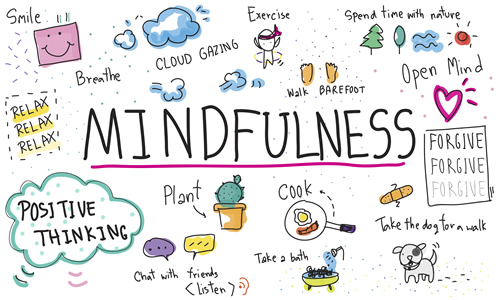[Editor’s Note: This article was first published on the Move This World blog.]
According to a study done by the University of Missouri, 93% of teachers are experiencing high levels of work-related stress. Mindfulness has already been proven to boost the emotional climate of the classroom by supporting teacher wellbeing; however, many schools still struggle with incorporating mindful practices for staff into school culture. What can schools do to begin prioritizing mindfulness as a daily routine for staff? Peace corners could be a place to start.
Related: 8 ways I practiced mindfulness this year
What are peace corners?
The purpose of a peace corner is to create a quiet, calming, and inviting space to practice mindfulness. With a growing number of children and teens experiencing trauma, peace corners have become a safe haven for students and a way for educators to address adversity and underlying issues of inequity in education.
Students are able to visit these spaces to work through personal challenges independently, practice self-regulation, and spend a few much needed mindful moments alone. Peace corners often contain a number of sensory items such as stuffed animals, toys, comfortable seating, glitter jars, notebooks, etc – all objects that are designed to help students with meditation and reflection.
Peace corners are proven to be effective and they’re empowering our students to practice resilience as well as take ownership of their actions and emotions. It’s true that peace corners were originally intended for students; however, everyone deserves time for quiet reflection, especially educators.
3 steps to creating peace corners for staff
Step 1:
Introduce staff to the idea and then figure out what they’d like to see included in their peace corner. Since a peace corner is a private and transformative space, it is important that this area is designed to fit the diverse needs of your staff. Ways you can collect this information is by addressing it at the next staff meeting or sending around a simple email survey that will allow educators to express their needs.
Step 2:
Find an open, unoccupied space or a designated area in a teachers’ lounge or conference room that can be transformed into a calming space for teachers.
Step 3:
Once you have your designated space and have communicated with your staff, you can begin building your peace corner. You may want to include essential oils and oil diffusers, teas and nutritious snacks, comfy rugs, motivational posters, a dry erase board for personal messages, sensory items for adults, a sound machine, and plants. After this, your staff peace corner is ready for its debut!
A final takeaway
Not every member of your staff will utilize the peace corner. However, many will appreciate the option of having a space that is dedicated to supporting their emotional and mental needs. Teacher stress has a direct impact on school climate. Even if only for a few minutes each day, teachers can utilize this space as a way to refocus, recharge, and leave with a renewed sense of energy that will stay with them throughout the day.
Related: 10 ways we made our school happier
- 5 digital resources to inspire curiosity and engage students - April 30, 2024
- Critical steps to help school districts combat ransomware attacks - April 30, 2024
- Empowering girls with STEM education to build tomorrow’s tech industry - April 29, 2024

